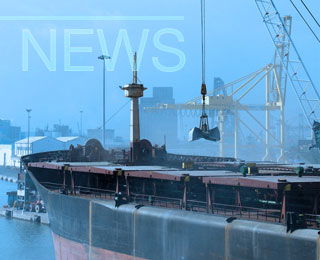While most rates had taken a southbound direction by mid week, pessimism does not seem to have spread out as far as the whole industry. One significant announcement has been made this week by a major Japanese shipping player which plans to re-equilibrate its business portfolio between liner shipping and dry bulk cargoes increasing the share of the latter. This is a rather strong message from which we can understand that somewhere dry bulk shipping will offer more stability and better prospects over the next few years.
Last week’s Panamax market saw rates tumbling in all sectors mainly due to a lack of new enquiry and a build up of prompt tonnage. The backhaul rates fell to around US$12,000, fronthaul close to US$20,000 and Transatlantic dipped below the US$20,000 mark. Owners withdrew vessels for short period interest due to the drop in rates, preferring to fix trips with the hope of a bounce. Sentiment is mixed but without some new enquiry the market could fall quickly.
Despite some activity one could not see any change of trend in the Handymax market. The Pacific in general continued downward with spot/prompt positions building up. Nopac or Australian rounds for Supermax were hovering in the mid teens while backhauls were paying in the low teens. Handies are now getting in the US$12/13,000 per day depending positions which is a severe drop from the highest of the year for a size that is normally not so volatile.
In the Atlantic Tess 45 types are still getting in the mid/high teens for Atlantic trade while Supermax are trying to get US$20,000/low 20,000’s. The Atlantic basin is higher but ballasters from the Indian ocean are putting pressure on the rates and charterers are now holding off anticipating further losses. There are some lights in sight anyway with the Indian ocean where rates in the past two or three days improved dramatically following an increase in iron ore shipments to China.
Source: Barry Rogliano Salles, shipbrokers, Paris


